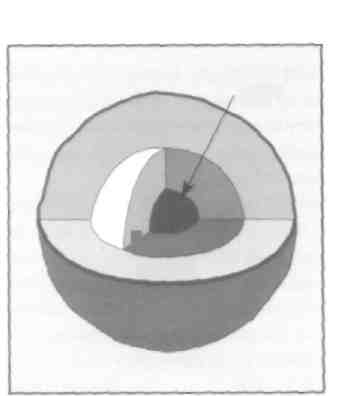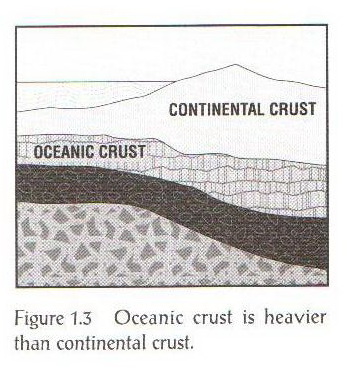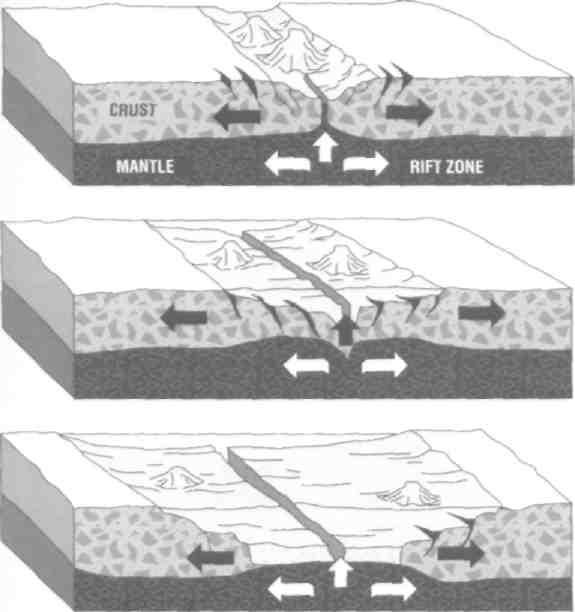
- •Basic Concepts of Geology
- •Vocabulary section
- •Be sure you know the following words and their translation
- •Match the words in column a with their definitions in column b
- •Skim the text and define classification of geological structure of the Earth
- •Scan the text and answer the following questions
- •Petroleum geology
- •Basic concepts of geology
- •Plate Tectonics
- •Crustal Plates
- •Petroleum Geology
- •Geologic Structures
- •Warps and Folds
- •Life on Earth
- •Geologic time scale
- •Categorizing Rocks
- •Types of Rock
- •The Rock Cycle
- •Say whether the following statements are true or false
- •5 Fill in the gaps
- •Grammar section noun
- •Noun Gender
- •Noun Plurals
- •Write the following nouns and word-combinations in plural
- •Give the plural forms of the following nouns
- •Translation section
- •Translate the following sentences from English into Ukrainian
- •Translate the following sentences from Ukrainian into English
Basic concepts of geology
Astronomers and physicists think today that the earth was formed at least 4.55 billion years ago out of a cloud of cosmic dust. As gravity pulled the planet together, the heat of compression of its radioactive elements caused it to become molten. The heaviest components, mostly iron and nickel, sank to the earth's center and became the core. Geologists believe that the core has two parts: an inner, solid core and an outer liquid core (fig. 1.1). Both are very hot, dense, and under tremendous pressure. Lighter minerals formed a thick, probably solid mantle around the outer core. Certain minerals rich in aluminum, silicon, magnesium, and other light elements solidified into a thin, rocky crust above the mantle.

Figure 1.1 A cross section of the
earth shows its inner and outer
cores, the mantle, and the crust.
Plate Tectonics
Geologists used to assume, quite naturally, that the continents always lay where they are now. However, resemblances between certain fossil plants in Europe and America, plus an apparent fit between the coastlines, led to the theory that the continents have moved over time (fig 1.2). Most geologists today believe that the crust is an assemblage of huge plates that fit together like a jigsaw puzzle. But unlike a jigsaw puzzle, pieces of the earth's crust continue to move and change shape. In some places they slide past one another; in others, they collide with or pull away from each other. The theory that explains these processes is called plate tectonics.
Crustal Plates
Geologists distinguish between oceanic crust, which lies under the oceans, and continental crust, of which the continents are made. Oceanic crust is thin –about 5 to 7 miles (8 to 11 kilometres) – and made up primarily of heavy rock that is formed when molten rock (magma) cools. The rock of continental crust, however, is thick – 10 to 30 miles (16 to 48 kilometres) – and relatively light. Because of these differences, continents tend to float like icebergs in a "sea" of heavier rock, rising high above sea level where they are the thickest – in the mountains.
Petroleum Geology
Some of the best evidence for moving plates comes from the bottom of the sea. In the middle of the Atlantic Ocean is a mountain range 10,000 miles (16,100 kilometres) long that snakes from Iceland to the southern tip of Africa (fig. 1.3).

It has a deep rift, or trench, along its crest. Investigation of this Mid-Atlantic Ridge has suggested that it is a place where two great plates are moving apart. Along the rift is a string of undersea volcanoes. Each time one erupts, the pressure of the lava pouring out pushes the sides of the rift farther apart. Lava then hardens into rock and becomes new crust between the two plates.

Figure 1.4 The Mid-Atlantic Ridge is an example
of two plates moving apart, forming new oceanic crust as lava is
rising from the rift beneath the plates hardens.
If the plates in the Atlantic are moving apart, then the Pacific Ocean basin is presumably becoming smaller. In fact, geologists believe that the westward movement of the North and South American continents (lighter continental crust) is forcing the Pacific plate (heavier oceanic crust) downward into the mantle (fig. 1.4). This collision of an oceanic and a continental plate accounts for the volcanoes and earthquakes common along this zone.
Geologists also have evidence of what happens when two continental plates collide. They believe that the tallest mountains in the world, the Himalayas, formed when India smashed into Asia. Like an incredibly slow head-on collision between two cars, the crustal collision buckled and folded the rocks along the edges of the two plates. In fact, the Himalayas are still rising by a measurable amount today.
